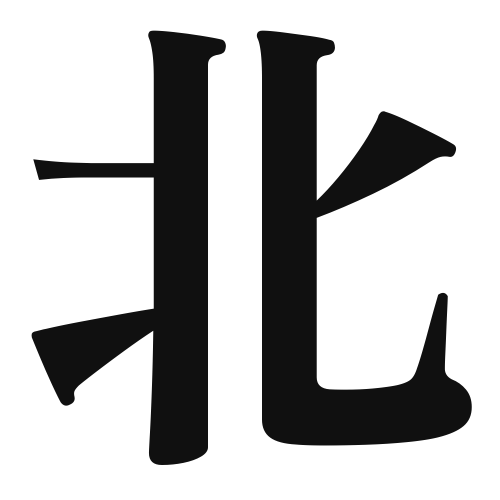1. Overview of Meaning
The kanji “北” (pronounced “kita” in Japanese) means “north.” It is used to indicate the direction opposite to south and is often associated with cold climates and regions in the northern hemisphere.
2. Formation and Radical
Formation of the Kanji: The kanji “北” is a pictogram that originally depicted a person with arms outstretched, symbolizing the direction of north. It is classified as a pictographic character.
Radical: The radical for “北” is also “北,” which is used in various kanji related to direction and geography.
3. Examples of Usage
Common Words and Phrases: Some common words that include “北” are:
- 北風 (kitakaze) – north wind
- 北極 (hokkyoku) – North Pole
- 北部 (hokubu) – northern part/region
Example Sentences in Daily Conversation:
- 今日は北風が強いです。 (Kyou wa kitakaze ga tsuyoi desu.) – The north wind is strong today.
- 私たちは北部に旅行します。 (Watashitachi wa hokubu ni ryokou shimasu.) – We will travel to the northern part.
4. Synonyms and Antonyms
Similar Kanji: A similar kanji is “南” (nan), which means “south.” While “北” refers to the northern direction, “南” indicates the opposite direction.
Antonyms: The antonym of “北” is “南” (nan), representing the southern direction.
5. Cultural and Historical Background
Relation to Japanese Culture: In Japanese culture, the concept of direction is significant, especially in traditional practices such as feng shui and in the orientation of buildings. The north is often associated with coldness and winter.
Proverbs and Idioms: One common saying is “北風と太陽” (kitakaze to taiyou), which translates to “The North Wind and the Sun,” a fable that illustrates the power of gentleness over force.
